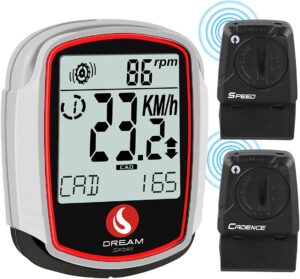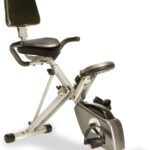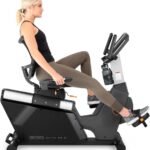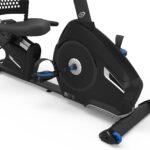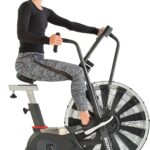Tracking your success is vital in the ever-changing world of fitness. The quantity of calories burned is an important indicator that fitness enthusiasts and weight loss warriors alike track. This provides a tangible sense of accomplishment and insight into the effectiveness of a workout.
In this calorie-burning quest, exercise bikes have become popular instruments. They provide a simple and low-impact way to get your cardio in and have functions that allow users to track their calorie calculation and expenditure. But have you ever wondered how these machines come up with that number?
Calorie Burning and Metabolism Fundamentals
A calorie is essentially a unit of energy. It is a measure of the energy we absorb through food and drink and the energy we expend through physical activity in the context of nutrition and exercise. We burn this energy while we exercise. Understanding calorie counts allows people to customize their exercise programs to their weight loss, maintenance, or muscle-building goals.
Our bodies are constantly burning calories. Even at rest, we use calories to perform essential processes like breathing and maintaining body temperature. This is referred to as the Basal Metabolic Rate (BMR). Our energy expenditure increases dramatically when we participate in physical activity. Factors such as exercise intensity, duration, and a person’s weight and muscular mass affect the total calories burned.
The Algorithm Behind Exercise Bike Calorie Calculations
At the heart of any digital exercise equipment, there’s an algorithm – a mathematical formula – doing the heavy lifting. When you ride an exercise bike, it doesn’t only keep track of how fast you’re going or how long you’ve been doing it. It employs an algorithm to calculate the number of calories you burn. This method generally generates a number by combining static data (such as your weight) and dynamic data (such as your speed).
Factors considered: To make this calorie estimation as close to reality as possible, exercise bikes use various parameters:
- Resistance: Just like cycling uphill outdoors is harder than on a flat road, the resistance on your exercise bike plays a significant role in calorie burn. Higher resistance means more effort, leading to more calories being torched.
- Speed: The faster you pedal, the higher the energy you expend. So, your pedaling speed, often measured in RPM (Revolutions Per Minute), is a crucial factor in the calculation.
- Duration: It’s simple math; the longer you exercise, the more calories you’ll burn, provided other factors remain constant.
- User input data: Modern exercise bikes often prompt users to enter specific personal details. This data, which we’ll delve into more deeply in the next section, refines the calorie burn estimation.
Understanding these elements makes it clearer why one workout might burn more calories than another, even if they feel equally challenging.
Read: Exercise Bikes with Gaming Features
-
User Input Data and Its Role in Calorie Calculation
Age, weight, and gender: How they influence the calorie burn rate: Personal characteristics can significantly affect how our bodies burn calories. Here’s a simplified breakdown:
- Age: As we grow older, our metabolism tends to slow down. This means a 20-year-old might burn calories at a different rate than someone in their 50s, even when doing the same exercise.
- Weight: The more you weigh, the more energy (or calories) it takes to move your body. Therefore, someone with a higher weight will typically expend more calories during the same workout than a lighter individual.
- Gender: Men and women have different metabolic rates. Factors like muscle mass and hormonal differences play a role in this. Generally, men tend to have a slightly higher metabolism, leading to a marginally higher calorie burn during exercise.
Importance of correct data entry for accurate calorie counting: You may be required to enter these personal details when creating your exercise bike profile. It is essential to be precise here. Incorrectly entering your age, weight, or gender on the bike can skew the calorie count, making your genuine calorie burn less accurate. Accurate data ensures the algorithm works in your favor, giving you a more accurate image of your exercise accomplishments.
Differences in Calorie Calculation Among Bike Types
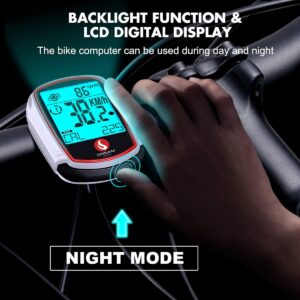
Different exercise bikes offer unique riding experiences, and this diversity influences how calories are calculated:
- Upright bikes vs. recumbent bikes: An upright bike is the typical stationary bike where you sit upright, much like a regular bicycle. In contrast, recumbent bikes allow you to sit back, placing less strain on the back. Given their design, upright bikes might lead to a slightly higher calorie burn because they engage more core muscles for stability. However, the difference is often marginal, and the best choice is the one that feels most comfortable and sustainable to the user.
- Spinning bikes vs. standard indoor cycles: Spinning bikes are designed for high-intensity workouts, resembling road biking conditions. They involve more of the user’s body, leading to a potentially higher calorie burn than a standard indoor cycle. However, the difference often comes down to the workout’s intensity and duration, rather than the bike type itself.
By understanding these differences, one can choose which exercise bike aligns best with their fitness goals.
Read: Why are exercise bike seats so uncomfortable
Common Misconceptions about Calorie Counts on Exercise Bikes
Machine readings aren’t flawless. Here are some widespread myths:
- Machine estimates vs. actual calorie burn: While the algorithms used by exercise bikes aim to be accurate, they are still estimates. Muscle mass, fitness level, and individual metabolism can cause variances in calories burned.
- Variability based on individual metabolism and fitness levels: Just because two people use the same settings on a bike doesn’t mean they’ll burn the same number of calories. Everyone’s body is unique, and thus, the calorie burn can vary even under identical exercise conditions.
It is important to consider calorie counts as a recommendation rather than an absolute value. Combining the data from the bike with other tools, such as wearable fitness trackers or professional metabolic tests, can provide a more complete picture of one’s calorie burn.
Conclusion
With their calorie-counting features, exercise bikes have proven to be essential tools in the fitness sector. While they provide a relatively accurate estimate, remember that various factors might influence the number of calories burned. Individuals can better grasp their fitness improvement by studying the mechanics and algorithms behind this equipment and combining that knowledge with personal measures. Stay informed, stay active, and most importantly, enjoy the ride!
